


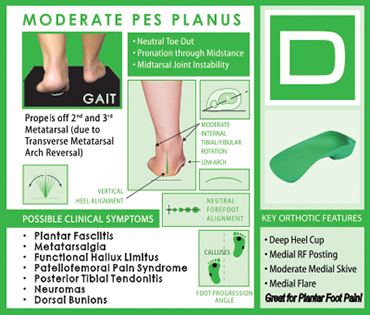
The D QUAD Foot-Type is a moderately over-pronated foot-type. This foot-type occurs when a Compensated Rearfoot Varus exists with a normal or neutral forefoot alignment.
The Quad D foot-type is congenitally a partially unstable foot and is often diagnosed in children as developmental flat foot. Make no mistake, if you think that this child will "out-grow the deformity," just ask Mom and Dad and their older siblings to take off their shoes and socks. If family members demonstrate similar foot characteristics, chances are that this child is not going to develop an arch. During gait, this foot begins to pronate at the subtalar joint in contact phase, and continues to pronate throughout midstance. In propulsion, the 1st ray will plantarflex to load the medial column of the foot and allow the foot to re-supinate.
All Quadrastep Orthotics are available in Regular and Narrow Widths, and with a topcover an an additional charge. For more information see Customized Orthotics.
LIST OF RECOMMENDED SHOES BY QUAD
(Please refresh your browser often)
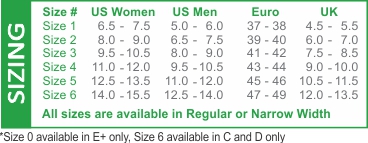
Having trouble selecting a Foot Type? Try our Easy Foot Typing Tool
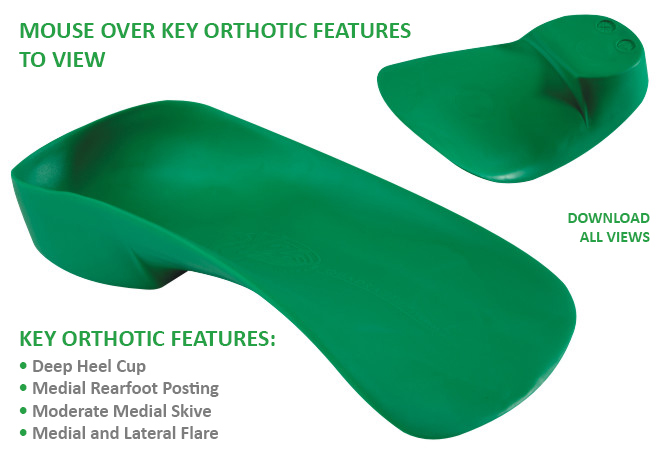
• Plantar Fasciitis
• Metatarsalgia
• Functional Hallux Limitus
• Patellofemoral Pain Syndrome
• Posterior Tibial Tendonitis
• Neuromas
• Hallux Limitus
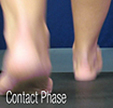 CONTACT CONTACTPHASE |
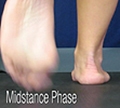 MIDSTANCE MIDSTANCEPHASE |
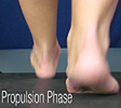 PROPULSION PROPULSIONPHASE |
| MOUSE OVER THE PHASE FOR DETAILS OF THE D QUAD GAIT |
||

Copyright ©2008-2024 Copyright QUADRASTEP SYSTEM® • Nolaro24™ LLC. All Rights Reserved
